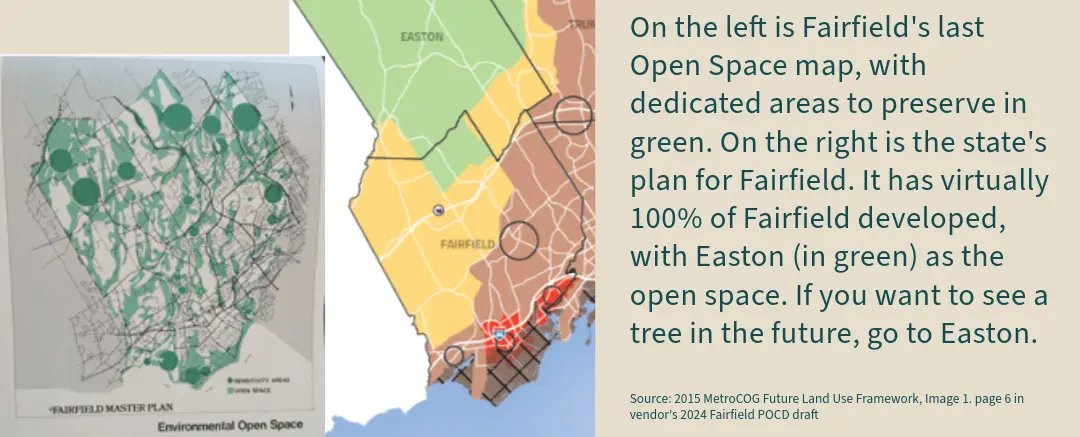Today, Friday, April 4 is National School Librarian Day and there’s less than two shopping weeks before National Librarian Day on Wednesday, April 16. Fairfield’s librarians are our heroes, literally. The book sleuths at our public and History Museum libraries found the entire collection of the town’s master plans and maps, all written in the 20th century. They have been lost for over 25 years – how and why is another story – and it is highly unlikely any volume would ever have seen the light of day again, much less the whole set. It is a priceless find for insights into Fairfield’s past and to build our path to the future.
These books reveal Fairfield’s soul, our identity of who it is and where its residents really came from. They provide historical context from a feel-like-you-are there mindset that add entirely new dimensions. The volumes are:
1947 Pilot Study, the seminal work upon which all others stand
1948 Town Plan, built upon the pilot study, the way it’s supposed to be
1960 Comprehensive Study, perhaps the most poetic
1976 Master Plan, with an irreplaceable trove of photos, maps and analysis
1979 Master Plan, issued just 3 years later. Why?
They are especially valuable and much needed right now, as this is a start of a new era for Fairfield. There has been turnover in town personnel, and with it the only champion of the vendor-written Plan of Conservation and Development (POCD). That draft needs so much improvement and completion in so many areas that its value is limited.
The tragedy is that these books and their spirit have been buried for nearly 50 years. The construction industry controls our electoral channels, state governmental agencies, and other levers of power. And in builders’ insatiable thirst to build, they trashed these plans, which stressed above all else the need to protect the environment. Starting in 2000, they wrote their own that were 180 degrees opposite, starting with trying to define Fairfield as a city, so they could have big buildings. Fairfield is not a city; it’s a large town with many distinct neighborhoods.
The repeated message is to preserve the fair fields of Fairfield. the beaches, rivers, hills and trees form the town’s singular, irreplaceable tapestry. Don’t break anything. These were the last volumes written internally; recent editions have been completed by vendors for state filing requirements. The trove is a reaffirmation, a foundation, a roadmap for the new plan and all future work
Newly assembled set of Fairfield town studies, plans, photos and maps tell a textured town story, with insights for even lifelong residents. Reflecting countless hours of work by the village elders of modern (post-WWII) Fairfield, the five-volume anthology is profound, providing POVs and insights that reach into every corner of Fairfield’s many neighborhoods. They paint an endlessly surprising portrait of who the town was and is, with remarkably prescient insights into its future. All can see what goals were laid out, and raises interest in why others were unfulfilled.
They address the major issues still discussed today, such as health & safety; education; preserving aesthetic standards and resisting development; commerce & business; and caring for all residents, especially the most vulnerable. The emphasis is on empowering neighborhoods, as they form the community of Fairfield as a whole. Perhaps most importantly, there is a recognition that the keystone to everything is helping others achieve the American dream of home ownership.
Dogs dig up plans and maps to Fairfield’s buried treasures; den mother upset as they just had baths.
With the advantage of 20/20 hindsight, the 20/20 foresight of the village elders of modern Fairfield places them in the same breath as America’s founding fathers. As Fairfield evolves and develops, this essential resource provides a mandate for future generations: to protect the essence of what makes Fairfield remarkable. These in-depth explorations of Fairfield allow even long-time residents to appreciate their town more profoundly, enriching their understanding of its history and significance.





